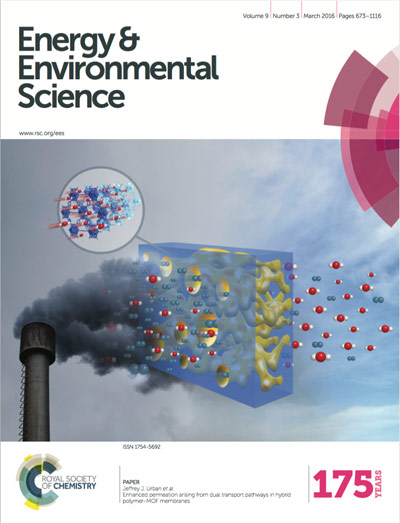
A new, highly permeable carbon capture membrane developed by scientists at the Molecular Foundry could lead to more efficient ways of separating carbon dioxide from power plant exhaust, preventing the greenhouse gas from entering the atmosphere and contributing to climate change.
The researchers focused on a hybrid membrane that is part polymer and part metal-organic framework, which is a porous three-dimensional crystal with a large internal surface area that can absorb enormous quantities of molecules.
In a first, the scientists engineered the membrane so that carbon dioxide molecules can travel through it via two distinct channels. Molecules can travel through the polymer component of the membrane, like they do in conventional gas-separation membranes. Or molecules can flow through “carbon dioxide highways” created by adjacent metal-organic frameworks.
Initial tests show this two-route approach makes the hybrid membrane eight times more carbon dioxide permeable than membranes composed only of the polymer. Boosting carbon dioxide permeability is a big goal in efforts to develop carbon capture materials that are energy efficient and cost competitive.

